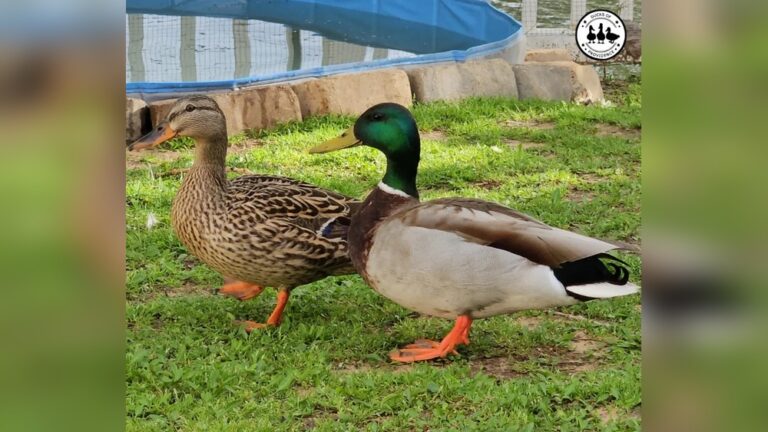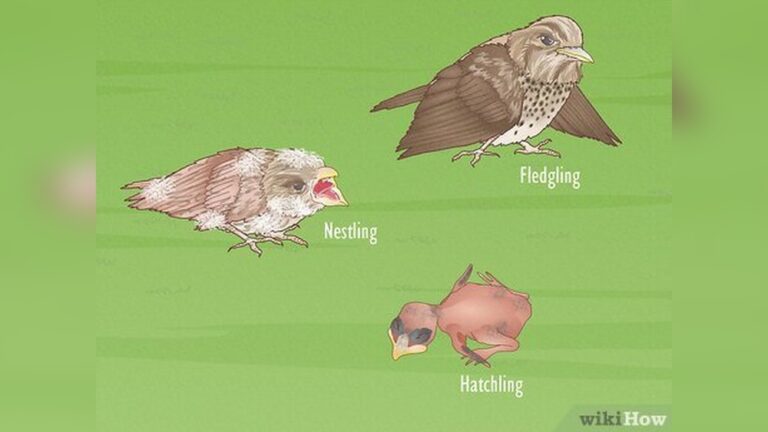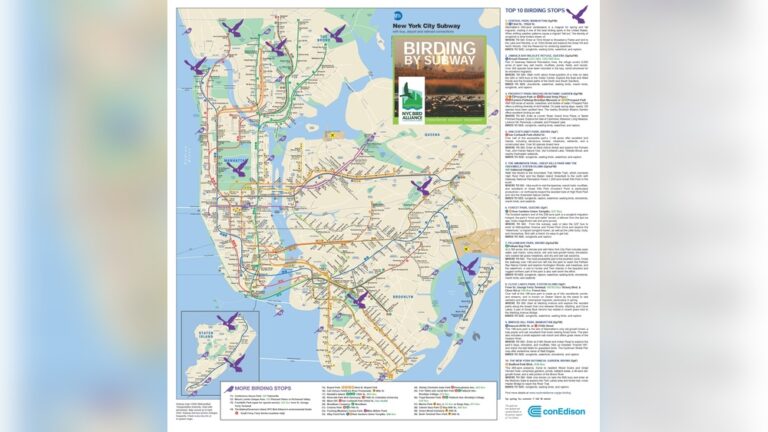When Are Birds Most Active
Have you ever wondered when birds are most active? Knowing the answer can completely change how you experience nature.
Whether you’re an avid birdwatcher, a photographer chasing the perfect shot, or simply curious about the world outside your window, understanding bird activity can help you connect with these amazing creatures like never before. You’ll discover the times of day when birds come alive, why they behave that way, and how you can make the most of these moments.
Ready to unlock the secret rhythms of birds and bring more life to your outdoor adventures? Keep reading—you won’t want to miss this.

Credit: www.wired.com
Daily Activity Patterns
Birds follow clear daily activity patterns. These patterns help them find food, avoid danger, and rest. Understanding these routines reveals why birds appear more active at certain times. Their behavior changes from dawn to night.
Dawn And Morning Activity
Birds are often busiest at dawn. The early light signals the start of their day. They sing loudly to mark territory and attract mates. Morning is prime time for hunting insects or gathering seeds. Cooler temperatures make it easier to search for food.
Midday Behavior
Activity slows down during midday. Birds rest in shaded areas to avoid heat. Some preen their feathers to stay clean and healthy. Others stay hidden to save energy. This quiet time helps them prepare for afternoon tasks.
Evening Movements
Birds become active again as the sun sets. They search for food to fuel their night rest. Many species gather in groups or fly to roosting spots. The fading light signals the end of daily foraging. Birds often increase vocalizations before settling down.
Nighttime Rest
Most birds rest at night. They find safe places, like trees or nests. Darkness lowers their activity to conserve energy. Some species, like owls, are exceptions and hunt at night. Rest is essential for survival and next day’s energy.
Seasonal Changes
Bird activity changes with the seasons. Different seasons bring changes in weather, daylight, and food. These changes affect bird behavior and energy levels. Birds adjust their routines to survive and thrive throughout the year.
Spring And Breeding Season
Spring is a busy time for birds. Longer days mean more light and warmth. Birds start singing loudly to attract mates. Many build nests to prepare for eggs. Feeding young chicks takes most of their energy. This season shows birds at their most active.
Summer Habits
Summer offers plenty of food and warmth. Birds spend time feeding and raising their young. They also molt, replacing old feathers with new ones. Activity may slow slightly during the hottest hours. Birds rest in shade and hunt in early morning or evening.
Autumn Migration
Autumn signals a time to travel. Many birds migrate to warmer places. Migration needs a lot of energy and planning. Birds eat more to build fat reserves for the journey. Their activity peaks during migration days. They often move in flocks for safety.
Winter Adaptations
Winter brings cold and less food. Birds reduce activity to save energy. Some stay active, searching for scarce food. Others fluff up feathers to keep warm. Many species change diets or rely on stored fat. Survival becomes the main focus during winter.
Environmental Influences
Bird activity changes with the environment around them. Many natural factors affect their behavior every day. Understanding these factors helps us know when birds are most active. Birds react to changes in weather, light, temperature, and food sources. These elements shape their daily routines and survival strategies.
Weather Effects
Weather has a strong impact on bird activity. Birds avoid flying in heavy rain or strong winds. Calm and clear days bring more movement and singing. Cold weather can slow birds down. They stay in sheltered places to keep warm.
Light And Temperature
Light signals birds about the time of day. Birds start their day at dawn when light first appears. Bright sunlight encourages feeding and flying. Temperature also matters. Birds prefer moderate temperatures for activity. Too hot or too cold weather makes them rest more.
Food Availability
Birds move based on where food is easy to find. Insects, seeds, and fruits attract them. When food is scarce, birds travel further and stay active longer. Abundant food means less energy spent searching. This affects how and when birds are active.

Credit: www.birdwatchingdaily.com
Species Variations
Birds show different activity times depending on their species. These differences help them survive and find food. Knowing these activity patterns helps bird watchers and nature lovers understand birds better.
Diurnal Birds
Diurnal birds are active during the day. They search for food in sunlight. Examples include robins, eagles, and sparrows. Their eyes are adapted to bright light. They rest at night to save energy.
Nocturnal Birds
Nocturnal birds are active at night. Owls and nightjars belong to this group. They hunt using sharp hearing and good night vision. These birds avoid daytime predators by resting in the day. Their feathers often help them fly silently.
Crepuscular Birds
Crepuscular birds are active at dawn and dusk. They avoid the heat of the day. Examples include some species of nighthawks and pigeons. These birds take advantage of low light to find food. Their activity times help them stay safe from predators.
Behavioral Activities
Birds show different behaviors throughout the day. These behaviors help them survive and grow. Understanding these actions reveals when birds are most active. Their daily activities include finding food, talking, showing off, and caring for babies.
Foraging And Feeding
Birds search for food mainly in early morning and late afternoon. They use their vision and hearing to find insects, seeds, or fruits. Feeding times depend on the bird species and food type. Many birds eat more when the weather is cooler. This helps them save energy during hot hours.
Singing And Communication
Birds sing mostly at dawn and dusk. These songs help mark their territory and attract mates. Different birds have unique calls for warning or gathering. Singing also strengthens bonds within bird groups. Quiet times allow birds to listen better to others.
Mating Displays
Birds perform mating dances or shows during breeding season. These displays happen mostly in the morning. Bright feathers and special movements attract partners. Males often compete by showing off their best colors. This behavior helps birds choose healthy mates.
Nesting And Care
Birds build nests to lay eggs and raise chicks. Nesting activity peaks during daylight hours. Parents take turns feeding and protecting young birds. They stay alert to avoid predators near the nest. Care continues until chicks can fly and find food alone.

Credit: www.birdwatchingdaily.com
How Smart Pets Lover Can Help You with When Are Birds Most Active
Turning Bird Activity into Meaningful Learning Moments
Understanding when birds are most active opens up wonderful opportunities to connect with nature and deepen your appreciation for these feathered friends. Observing their daily activity patterns and how environmental influences shape their behavior can be both relaxing and educational. For instance, morning and late afternoon are often peak times for bird activity—ideal moments to watch feeding habits or listen to their songs.
Seasonal changes add another layer to this learning, as migration or nesting behaviors vary throughout the year. By paying attention to these shifts, you can better anticipate what your local birds might be up to and create enriching experiences for yourself and your family.
- Keep a simple journal of bird sightings and behaviors to spot patterns over time.
- Use binoculars or a bird feeder to safely observe species variations without disturbing them.
- Share your observations with community groups or online forums to connect with fellow bird enthusiasts.
At Smart Pets Lover, we believe that every chirp tells a story worth exploring. For more tips on bird behavior or to discuss your observations, feel free to reach out via [email protected]. Embracing these moments not only enriches your knowledge but also nurtures a lasting bond between you and the natural world.
Frequently Asked Questions
When Do Birds Start Being Active Daily?
Birds typically become active at dawn. This early activity is called the dawn chorus. It helps them find food and communicate.
Why Are Birds Most Active During Mornings?
Mornings offer optimal conditions for feeding. Cooler temperatures and abundant insects make it ideal. Birds use this time to gather food.
How Does Weather Affect Bird Activity?
Weather impacts bird behavior significantly. Birds are less active during rain or extreme heat. Mild, calm weather increases their activity levels.
Are Birds Active At Night Too?
Most birds are diurnal, active during the day. However, some species like owls are nocturnal and active at night.
Conclusion
Birds show the most activity early in the morning and late afternoon. These times offer cooler temperatures and better food chances. Watching birds during these hours gives a chance to see their natural behaviors. Different species may have unique active periods, so pay attention to local birds.
Knowing when birds are most active helps plan birdwatching trips well. Enjoy nature’s rhythms and the lively world of birds.







